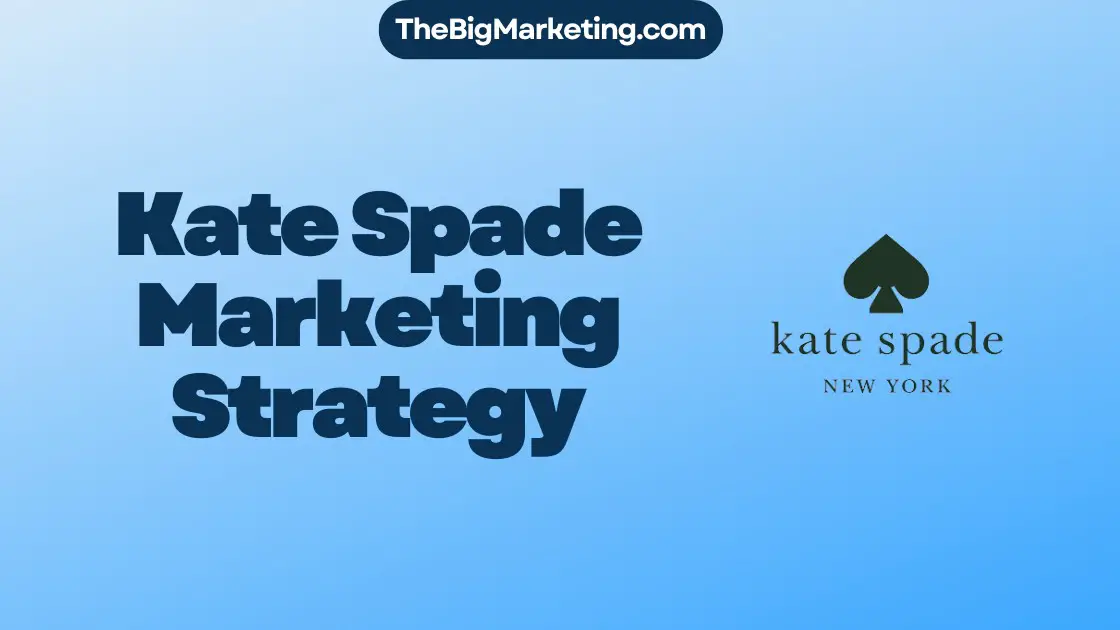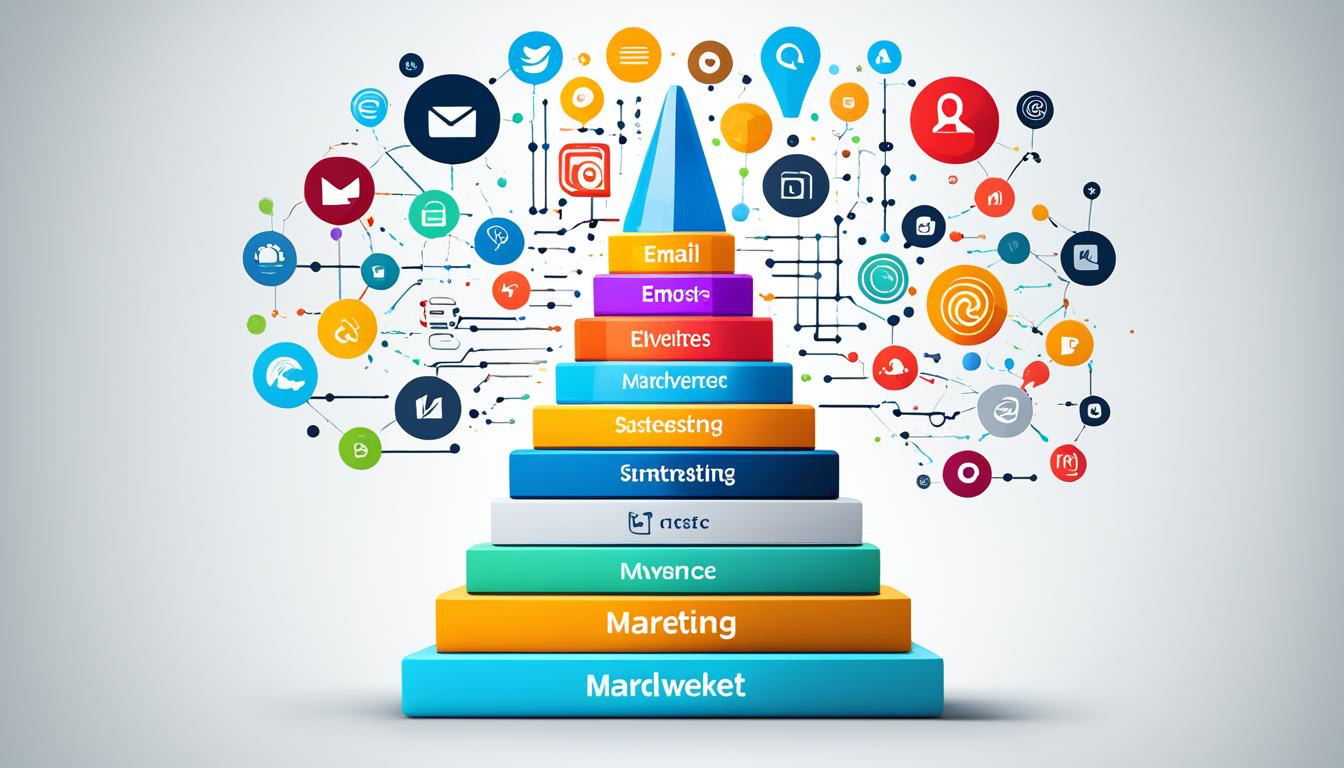Music marketing plays a pivotal role in the success of musicians and artists in the ever-evolving music industry. It involves a wide range of strategies and techniques to promote music, engage with fans, and create a unique brand presence. Whether you’re an aspiring musician or an established artist, understanding the basics of music marketing is crucial for gaining recognition and reaching a broader audience.
Effective music marketing extends beyond simply creating and releasing music. It encompasses the creation, sharing, delivery, and exchange of music offerings that hold value for customers, fans, or partners. By implementing innovative music promotion strategies and utilizing digital music marketing tools, artists can maximize their visibility and create meaningful connections with their audience.
In this comprehensive guide, we’ll explore various music marketing techniques, delve into the world of music branding strategies, and highlight the essential music marketing tools that every musician should be familiar with. Whether you’re looking to increase your streaming numbers, expand your fan base, or secure more gigs, this article will provide you with the insights and knowledge you need to effectively navigate the intricacies of the music industry.
Key Takeaways:
- Music marketing involves strategies and techniques to promote music and increase its reach.
- Understanding the four Ps of music marketing – product, price, promotion, and place – is crucial for any successful music marketing campaign.
- Musicians’ earning potential varies, with a small percentage earning significant revenue from streaming platforms like Spotify.
- There are various types of music products that musicians can create and sell, including songs, albums, performances, licensing, merchandise, and record production.
- Pricing music products requires careful consideration of market demand, perceived value, and revenue sharing.
The Four Ps of Music Marketing
When it comes to music marketing, understanding the four Ps is essential for achieving success. These four elements – product, price, promotion, and place – form the foundation of any effective music marketing campaign.
Product
The product in music marketing refers to the music itself, whether it’s a single, an album, or a live performance. Musicians need to create high-quality and engaging music that resonates with their target audience. This involves not only crafting compelling melodies and lyrics but also considering the overall production value and sonic experience.
Price
Pricing plays a crucial role in music marketing. Musicians need to determine how they will monetize their music, whether it’s through concert tickets, streaming revenue, merchandise sales, or other means. Understanding the value proposition of the music and aligning the pricing strategy accordingly is essential for attracting customers and generating revenue.
Promotion
Promotion involves various strategies aimed at creating awareness and generating interest in the music. This includes activities such as social media marketing, influencer collaborations, content creation, public relations, and advertising. Musicians need to develop effective promotional campaigns that resonate with their target audience and create a buzz around their music.
Place
The place element of music marketing refers to the distribution and availability of the music to the audience. Musicians need to consider the platforms and channels through which they will make their music accessible, such as streaming platforms like Spotify and Apple Music, online stores like Bandcamp, or physical distribution through record labels or independent retailers. Ensuring that the music is readily available and easily discoverable is crucial for reaching a wider audience.
By strategically addressing each of the four Ps – product, price, promotion, and place – musicians can develop a comprehensive and effective music marketing strategy. Integrating these elements seamlessly will help them maximize their reach, engage with their audience, and ultimately achieve their goals.
Understanding the Musician Status
When it comes to the world of music, there are millions of musicians trying to make a name for themselves. However, not all musicians achieve the same level of success or earn significant revenue from their music. In fact, according to Spotify, only a small percentage of musicians on the platform are able to generate substantial income.
Spotify, one of the leading music streaming platforms, has access to a vast amount of data regarding musician statistics. Their data reveals that most musicians have released fewer than 10 songs and may be new to the industry or treating music as a side project. This indicates that a large number of musicians are still in the early stages of their careers.
While many musicians struggle to gain traction, there is a select group that manages to earn a substantial income from streaming on Spotify. Approximately 25% of musicians on the platform make more than $10,000 from streaming alone. When considering total revenue, including streaming and other sources such as gigs and merchandise sales, around 25% of musicians earn $40,000 or more.
Earning from Streaming:
Earning significant revenue from streaming on platforms like Spotify is a milestone that many musicians aspire to reach. It is important to note that streaming revenue is influenced by various factors, including the number of songs released, the popularity of the music, and the size of the artist’s fan base. Musicians who have a larger catalog of songs and a dedicated following are more likely to earn higher income from streaming.
Number of Songs Released:
The number of songs released by a musician can have a direct impact on their earning potential. Musicians with a limited number of songs may find it challenging to attract a large audience or generate substantial income from streaming. On the other hand, musicians with a more extensive discography have a greater chance of capturing the attention of listeners and increasing their streaming revenue.
In conclusion, the musician status on platforms like Spotify can vary greatly. While the majority of musicians have a limited number of songs released and may be in the early stages of their careers, a small percentage achieve significant revenue from streaming and other sources. As aspiring musicians navigate their musical journey, understanding the importance of building a catalog of songs and growing a dedicated fan base is essential for increasing their chances of success.
| Musician Status on Spotify | Earning from Streaming | Total Revenue |
|---|---|---|
| Majority of musicians | Less than $10,000 | Varies |
| Approximately 25% of musicians | More than $10,000 from streaming | $40,000 or more |
Different Types of Music Products
When it comes to the music industry, there is a wide range of products that musicians can create and sell to their audience. These products not only provide artistic expression but also serve as sources of revenue and opportunities for growth. In this section, we will explore the different types of music products and their significance in the industry.
Songs and Albums
At the core of any musician’s work are songs and albums. These compositions represent the artistic expression of the musician, encapsulating their emotions, stories, and creativity. Songs can be released as individual singles or combined into albums, offering listeners a collection of musical experiences. Each song or album has the potential to resonate with audiences and generate revenue through streaming, downloads, or physical sales.
Performances (Gigs)
Live performances, also known as gigs, are an integral part of a musician’s career. Gigs allow musicians to connect with their audience on a personal level, showcasing their talent and energy in a live setting. From small intimate venues to large stadiums, gigs provide an opportunity for musicians to engage with fans, build a dedicated following, and earn income through ticket sales and merchandise.
Licensing
Licensing is another avenue for musicians to monetize their work. This involves granting permission to third parties, such as commercials, films, or video games, to use their music in exchange for licensing fees. Licensing agreements can provide exposure to new audiences and create additional revenue streams for musicians beyond traditional sales and performances.
Merchandise
Merchandise plays a vital role in music marketing and brand extension. Musicians often create and sell merchandise such as clothing, accessories, and physical copies of their music. These items not only generate revenue but also serve as a form of fan engagement and brand promotion. From t-shirts and posters to limited-edition collector’s items, merchandise allows fans to show support for their favorite artists and connect with their music on a deeper level.
Record Production
Record production refers to the process of creating professional recordings for musicians. This includes hiring producers, recording engineers, and studio time to ensure high-quality sound production. Record production is a crucial investment for musicians, as it enhances the overall listening experience and contributes to the success of their music.
Streaming
In the digital age, streaming platforms like Spotify, Apple Music, and YouTube have revolutionized the way music is consumed and monetized. Musicians can distribute their music on these platforms, allowing them to reach a global audience and potentially generate income through streaming royalties. Streaming has become a dominant format for music consumption, making it essential for musicians to have their catalog available on these platforms.
Session Musicians
In addition to creating their own music, musicians may also offer their services as session musicians. Session musicians are hired by other artists or bands to contribute to recordings or live performances. They bring their unique skills, creativity, and style to enhance the musical arrangements and overall sound. Session work provides an additional source of income and networking opportunities within the music industry.
As musicians navigate the industry, they must consider the potential revenue, copyright, and trademark implications associated with each type of music product. With a diverse range of offerings, musicians can expand their creative horizons, connect with their audience, and build a sustainable career in the ever-evolving music industry.
| Music Product | Potential Revenue | Key Considerations |
|---|---|---|
| Songs and Albums | Streaming royalties, downloads, physical sales | Copyright, licensing, distribution |
| Performances (Gigs) | Ticket sales, merchandise | Venue contracts, logistics |
| Licensing | Licensing fees | Legal agreements, rights management |
| Merchandise | Sales revenue | Design, production, fulfillment |
| Record Production | Income from production services | Professional networks, studio costs |
| Streaming | Streaming royalties | Digital distribution, platform promotion |
| Session Musicians | Paid session work | Networking, reputation |
Pricing Your Music Products
When it comes to pricing your music products, several factors come into play. Considerations such as market demand, perceived value, and revenue sharing are essential in determining the optimal price for your offerings. Let’s explore some key aspects of pricing music products, including tiered pricing, gig income, streaming revenue, producer fees, merchandise prices, and session musician rates.
Tiered Pricing for Gigs
One effective strategy for pricing your live performances is tiered pricing. By offering different ticket tiers, you can cater to various segments of your audience. Higher-priced tiers might include VIP experiences or exclusive merchandise, while lower-priced tiers provide affordable options for fans. This approach allows you to maximize gig income and accommodate different fan preferences.
Streaming Revenue and Income
With the rise of streaming platforms, revenue from streaming has become a significant income source for musicians. It’s crucial to understand how streaming revenue is generated and distributed. Musicians typically receive a share of the income generated from streaming platforms like Spotify or Apple Music. The remaining revenue covers expenses and is shared with other stakeholders, such as record labels or distributors.
Producer Fees and Session Musician Rates
When working with producers or hiring session musicians, fees can vary based on several factors. The experience and reputation of the producer or musician, the complexity of the project, and the estimated time involved all contribute to the final fee. Negotiating fair and mutually beneficial rates is essential for both parties involved.
Merchandise Prices
Merchandise plays a significant role in music marketing and can be an additional revenue stream for musicians. When pricing your merchandise, consider production costs, perceived value, and market demand. It’s important to strike a balance between affordability for fans and generating profit for your music business.
| Product | Pricing Considerations |
|---|---|
| Gig Tickets | Tiered pricing, VIP experiences, exclusive merchandise |
| Streaming Revenue | Revenue sharing with platforms, expenses, and stakeholders |
| Producer Fees | Experience, complexity of the project, estimated time involved |
| Session Musician Rates | Experience, complexity of the project, estimated time involved |
| Merchandise | Production costs, perceived value, market demand |
Setting the right prices for your music products requires careful consideration and a deep understanding of the market dynamics. By adopting strategic pricing approaches and valuing your work appropriately, you can optimize your revenue streams and create a sustainable music business model.
Setting Goals for Music Marketing
Setting clear and achievable goals is a crucial aspect of effective music marketing. By defining specific objectives, musicians can structure their marketing efforts and track their progress toward success. Whether you’re an aspiring artist or an established musician, goal setting provides the roadmap for your music career.
When it comes to setting music marketing goals, it’s important to consider what you want to achieve. Here are some key goals that musicians often focus on:
- Increasing Streams: One goal could be to increase the number of streams on popular streaming platforms such as Spotify or Apple Music. This can help increase your visibility and audience reach.
- Fan Base Growth: Building a dedicated fan base is essential for long-term success as a musician. Setting a goal to grow your fan base can involve strategies such as engagement on social media, live performances, and collaborations.
- Securing Gigs or Commissions: If you’re a performing artist, setting a goal to secure regular gigs or commissions can help you generate income and gain exposure.
These are just a few examples of the goals you could set for your music marketing efforts. Remember, it’s important to make your goals measurable and specific so that you have a clear target to work towards.
How to Set Measurable Objectives
Now that you have an idea of the goals you want to achieve, it’s time to turn them into measurable objectives. Measurable objectives allow you to track your progress and determine whether you’re on the right path or need to make adjustments to your strategies.
Here’s how you can set measurable objectives for your music marketing goals:
- Define Your Metrics: Identify the specific metrics you will use to measure your progress. For example, if your goal is to increase streams, you might track the number of monthly streams or the increase in listeners on streaming platforms.
- Set a Target: Determine the target you want to achieve within a specific time frame. This could be a certain number of streams per month or a percentage increase in your fan base.
- Track Your Progress: Regularly monitor your metrics and compare them to your target. This will help you assess whether you’re making progress or need to adjust your strategies.
- Make Adjustments: If you find that you’re not reaching your objectives, don’t be afraid to make adjustments to your marketing strategies. Experiment with different approaches and analyze the impact on your metrics.
By setting measurable objectives, you’ll be able to gauge the success of your music marketing efforts and make informed decisions based on real data.
Remember, goal setting is an ongoing process. As you achieve your goals, it’s important to set new ones to continue your growth as a musician. Regularly evaluate your goals and adapt them to align with your evolving aspirations and the changing dynamics of the music industry.
| Goal | Description | Metric | Target |
|---|---|---|---|
| Increase Streams | Boost the number of streams on streaming platforms | Monthly streams | 50% increase within 6 months |
| Fan Base Growth | Expand and engage a dedicated fan base | Social media followers, mailing list subscribers | 1000 new followers/subscribers within a year |
| Securing Gigs or Commissions | Book regular live performances or commissions | Number of gigs or commissions | At least 10 gigs/commissions in the next year |
Distribution Channels for Music
When it comes to reaching a wider audience, musicians have various distribution channels at their disposal. These platforms and services help make music easily accessible and available to listeners around the world. Let’s explore some of the popular music distribution channels:
Streaming Platforms
Streaming platforms like Spotify, Apple Music, YouTube, and SoundCloud have revolutionized the way music is consumed. Artists can upload their music to these platforms, making it accessible to millions of users worldwide. With features like playlists, artist profiles, and personalized recommendations, streaming platforms provide an excellent opportunity for musicians to showcase their work and gain exposure.
Online Distribution Services
In addition to streaming platforms, musicians can leverage online distribution services such as Bandcamp, Tunecore, CDBaby, and EmuBands. These platforms allow artists to distribute their music to multiple online stores and streaming services, expanding their reach and potential revenue streams. They provide comprehensive solutions for music distribution, ensuring that artists can focus on creating music while their content reaches a wider audience.
Gig Listing Platforms
Live performances are a crucial aspect of a musician’s career, and gig listing platforms play a significant role in promoting these events. Platforms like Bandsintown, Google Search, and social media sites enable artists to showcase their upcoming gigs and connect with fans who are interested in attending live shows. These platforms provide a convenient way for musicians to reach out to their audience and keep them updated about their performances.
Music distribution channels provide musicians with the means to share their music and connect with fans on a global scale. By utilizing platforms like streaming services, online distribution services, and gig listing platforms, musicians can broaden their reach, increase their visibility, and create meaningful connections with their audience.
The Power of Social Media in Music Marketing
Social media platforms like Instagram, TikTok, and YouTube have become powerful tools for music marketing. Musicians can harness the vast reach and engagement potential of these platforms to connect with their audience, build a loyal fanbase, and expand their visibility in the industry.
One of the key advantages of social media music marketing is the ability to engage directly with fans. Musicians can share behind-the-scenes moments, provide personal updates, and interact with their followers in real-time. This level of interaction helps create a deeper connection with fans and fosters a sense of community.
In addition to engagement, social media platforms offer various features that enable musicians to showcase their talents and promote their music effectively. Musicians can post teasers of upcoming releases, share snippets of their songs or performances, and even collaborate with fellow musicians or influencers. By leveraging these platforms, musicians can generate interest and buzz around their music.
Engaging content and storytelling techniques are essential elements of effective social media music marketing. Musicians can use captivating visuals, compelling captions, and creative storytelling to captivate their audience and leave a lasting impression. By telling their unique story and sharing their journey, musicians can establish a distinctive brand identity and connect with fans on a deeper level.
Collaborations with influencers and fellow musicians can significantly amplify the reach and impact of a music marketing campaign. By partnering with popular influencers who share a similar target audience, musicians can tap into their existing fanbase and gain exposure to a wider audience. Collaborating with other musicians also allows for cross-promotion and mutual support, creating a win-win situation for all parties involved.
| Social Media Platform | Key Features |
|---|---|
| – Visual storytelling through photos and videos – IGTV for longer form content – Reels for short, engaging videos |
|
| TikTok | – Short-form videos with catchy music snippets – Trending challenges and viral content – Hashtag-based discovery |
| YouTube | – Full-length music videos and live performances – Vevo channel for official music videos – YouTube Premieres for exclusive releases |
By leveraging the power of social media platforms like Instagram, TikTok, and YouTube, musicians can create a strong online presence, engage with fans, and ultimately increase their visibility and success in the music industry.
Offline Music Promotion Techniques
While digital platforms play a vital role in music promotion, it’s essential not to overlook offline strategies. These offline music promotion techniques can complement online efforts and help you gain local recognition, build a dedicated fanbase, and create valuable connections and opportunities within your local music community.
1. Live Concerts
Nothing beats the energy and connection of a live performance. By organizing and performing at live concerts, you can engage with your audience on a personal level, showcase your talent, and attract new fans. Consider partnering with local venues or participating in music festivals to expand your reach.
2. Flyers
Don’t underestimate the power of well-designed flyers. Distribute and post flyers in popular local spots such as coffee shops, record stores, college campuses, or community centers to create awareness about your music and upcoming performances. Make sure to include your contact information and links to your online platforms.
3. Local Radio
Reach out to local radio stations that cater to your target audience or genre. Send them your music and provide a brief bio and press release. Getting airplay on local radio can significantly increase your exposure and attract listeners who appreciate local talent.
4. Album Release Parties
Organize album release parties to celebrate and promote your new music. Invite fans, friends, industry professionals, and local influencers to create buzz around your release. Consider partnering with local businesses or venues to host the event and showcase your music.
5. Collaborations
Collaborating with other musicians can expand your network and introduce you to new audiences. Seek out opportunities to work with local artists or bands, either by featuring on their tracks or organizing joint performances. Collaborations can help cross-promote each other’s music and attract fans from different circles.
Remember, offline music promotion techniques can perfectly complement your online efforts. By incorporating live concerts, flyers, local radio, album release parties, and collaborations into your marketing strategy, you can create a well-rounded approach to gaining recognition and building a dedicated fanbase.
Monitoring and Analyzing Your Music Marketing Efforts
As a musician, monitoring and analyzing your music marketing efforts is crucial for assessing the success of your campaigns and making informed decisions. By utilizing the analytics tools provided by social media platforms, you can gain valuable insights into the effectiveness of your marketing strategies and optimize them for better results.
Analyzing music marketing: By analyzing your music marketing efforts, you can evaluate the impact of your promotional activities, identify strengths and weaknesses, and make data-driven decisions to improve your overall strategy.
Social media analytics: Social media platforms offer comprehensive analytics tools that allow you to measure engagement, track follower growth, and gain insights into the performance of your posts and content. You can analyze metrics such as likes, comments, shares, and reach to understand how your audience is responding to your music.
Engagement metrics: Engagement metrics, such as the number of likes, comments, shares, and click-through rates, provide useful information about the level of interaction and interest generated by your music. Monitoring these metrics can help you gauge the effectiveness of your marketing efforts and identify opportunities to enhance audience engagement.
Optimization strategies: By continuously analyzing data and performance metrics, you can identify areas for improvement and optimize your marketing strategies. This might involve experimenting with different types of content, refining your targeting parameters, or adjusting the timing and frequency of your posts to maximize engagement.
Remember, monitoring and analyzing your music marketing efforts is an ongoing process. Regularly reviewing and interpreting the data will enable you to refine your approaches, make better-informed decisions, and ultimately improve your marketing efforts for long-term success.
Example Music Marketing Analytics Report
| Metric | Result |
|---|---|
| Number of followers | 10,000 |
| Reach | 100,000 |
| Engagement rate | 5% |
| Top-performing content | Song cover video |
| Demographics | Mainly 18-24 age group |
| Geographical reach | Primarily United States and United Kingdom |
Utilizing Online Tools for Music Marketing
Online music marketing tools play a significant role in promoting and expanding a musician’s online presence. These tools include creating webstores, electronic press kits (EPKs), and newsletters. Leveraging these resources can help musicians connect with their audience more effectively and increase their visibility.
Webstores
Creating webstores is essential for musicians to sell their music and merchandise directly to their fans. These webstores serve as a hub for fans to purchase physical copies of albums, merchandise like t-shirts and posters, and even exclusive content. By having a dedicated webstore, musicians can retain a larger portion of their sales revenue compared to relying solely on streaming platforms.
Electronic Press Kits (EPKs)
Electronic press kits (EPKs) are digital portfolios that showcase a musician’s work, including biographies, music samples, press releases, and videos. EPKs are essential for introducing musicians to promoters, venues, and media outlets. These online tools provide all necessary information in a professional and easily accessible format, making it easier for industry professionals to consider collaborations or media coverage.
Newsletters
Maintaining newsletters is an effective way for musicians to communicate and engage with their fans. By collecting email addresses from fans and subscribers, musicians can directly share exciting updates, new releases, upcoming shows, and exclusive content. Newsletters help musicians foster a deeper connection with their audience and strengthen their fan base.
One online platform that provides a range of free tools for independent musicians is Magroove for Artists. Magroove offers services such as webstore setup, EPK creation, and newsletter management. These tools enable musicians to have a comprehensive online presence, manage their online store easily, present their work professionally, and stay connected with fans more efficiently.
By utilizing these online music marketing tools, musicians can enhance their online presence, reach a wider audience, and strengthen their connection with fans. Let’s explore the possibilities that these online tools offer for musicians to grow and succeed in the music industry.
Conclusion
Effective music marketing is crucial for gaining recognition and reaching a broader audience in the music industry. By understanding the basics of music marketing and utilizing online and offline promotion techniques, musicians can maximize their visibility and build a dedicated fanbase.
Music marketing involves strategies and techniques to promote music, engage with fans, and create a unique brand. It encompasses activities such as social media marketing, live performances, collaborations, distribution, and pricing music products.
Continuous analysis and optimization of marketing efforts are essential for long-term success. By monitoring engagement metrics and social media analytics, musicians can refine their approaches and improve their marketing strategies for better results. It’s important to adapt to emerging trends and be consistent in reaching out to the target audience. Maintaining a strong online presence through webstores, newsletters, and electronic press kits (EPKs) is also vital.
Ultimately, successful music marketing requires a combination of creativity, persistence, and adaptability. By implementing effective marketing strategies, musicians can gain recognition, attract more fans, and achieve their goals in the competitive music industry.





